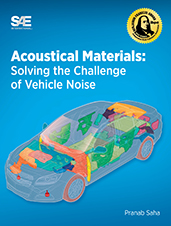Technical Paper
Hybrid Laminated Panels Addressing Acoustic Issues in Vehicles
2021-08-31
2021-01-1086
Laminated steel body panels are used in different applications in vehicles, such as dash panels and wheel wells. A part made out of laminated steel has the potential to provide structure-borne noise reduction and also improve the airborne noise reduction of the part compared to a monolithic part. The use of laminated steel has been more critical when there are deep draws on the part as the deep draws cause localized resonances which degrade the acoustic performance significantly. However, due to lightweighting demands, hybrid laminated panels, commonly known as acoustic patch laminates have become very attractive. This paper discusses the damping and sound transmission loss performances of a dash panel part with monolithic, laminated, and acoustic patch panels.

